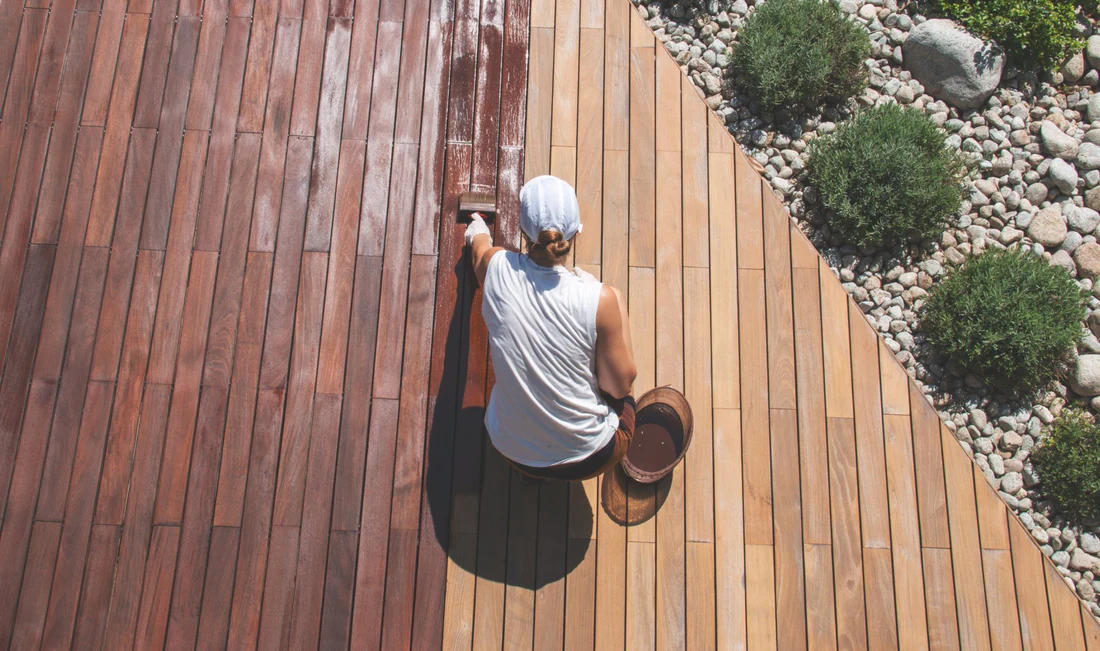Does Ipe Wood Need to Be Sealed?
 Ipe wood is one of the most durable and dense hardwoods available, often used for decking, outdoor furniture, and siding. Many homeowners wonder: does Ipe wood need to be sealed? While sealing is not mandatory, it can enhance the wood’s longevity and appearance. In this article, we will explore the benefits of sealing Ipe wood, the best sealing methods, and how to maintain its natural beauty.
Ipe wood is one of the most durable and dense hardwoods available, often used for decking, outdoor furniture, and siding. Many homeowners wonder: does Ipe wood need to be sealed? While sealing is not mandatory, it can enhance the wood’s longevity and appearance. In this article, we will explore the benefits of sealing Ipe wood, the best sealing methods, and how to maintain its natural beauty.
Understanding Ipe Wood Properties
Ipe, also known as Brazilian Walnut, is highly resistant to moisture, insects, and rot. Thanks to its natural oils and dense grain, it does not easily absorb water or deteriorate like softer woods. This raises the question: does Ipe wood need to be sealed? The answer depends on your goals for aesthetics and longevity.
Benefits of Sealing Ipe Wood
Although Ipe is naturally resilient, sealing it can offer several advantages:
- Prevents graying: Without sealing, Ipe wood will naturally turn a silver-gray color due to UV exposure.
- Enhances color: A good sealant maintains the rich brown and reddish tones of Ipe.
- Reduces maintenance: Sealing helps protect the surface from dirt, stains, and mold growth.
- Minimizes checking: While Ipe is stable, sealing can further reduce minor cracks over time.
What Happens If You Don't Seal Ipe?
If you choose not to seal Ipe wood, it will still last for decades. However, expect the following changes:
- Color fading: Ipe will develop a silver patina over time.
- Surface roughness: Weathering can make the texture slightly rougher.
- Less uniform aging: Some areas may darken or lighten unevenly.
If you prefer the natural weathered look, then sealing is not necessary. However, for those who want to maintain Ipe’s deep, rich hues, applying a sealant is recommended.
Best Sealants for Ipe Wood
To preserve the original color and protect the wood, use a high-quality penetrating oil-based sealer. Some popular options include:
- Ipe Oil: Specifically designed for Ipe and other hardwoods.
- Teak Oil: Provides a natural finish with UV protection.
- UV-resistant finishes: Help prevent sun damage and discoloration.
How to Apply a Sealant
Follow these simple steps to seal your Ipe wood properly:
- Clean the surface: Remove dirt, dust, and mildew using a wood cleaner.
- Let it dry: Ensure the wood is completely dry before sealing.
- Apply a thin coat: Use a brush, roller, or sprayer to apply the sealer.
- Wipe off excess: After 20–30 minutes, remove any extra product with a cloth.
- Allow drying: Let the sealer cure as per manufacturer instructions.
Conclusion: Should You Seal Ipe Wood?
So, does Ipe wood need to be sealed? While sealing is not required for durability, it is recommended if you want to maintain the wood’s color and reduce maintenance. Whether you choose to seal it or let it age naturally, Ipe remains one of the best choices for long-lasting outdoor projects.
Source: lumberpoint.com
|
|


 Ipe wood is one of the most durable and dense hardwoods available, often used for decking, outdoor furniture, and siding. Many homeowners wonder: does
Ipe wood is one of the most durable and dense hardwoods available, often used for decking, outdoor furniture, and siding. Many homeowners wonder: does